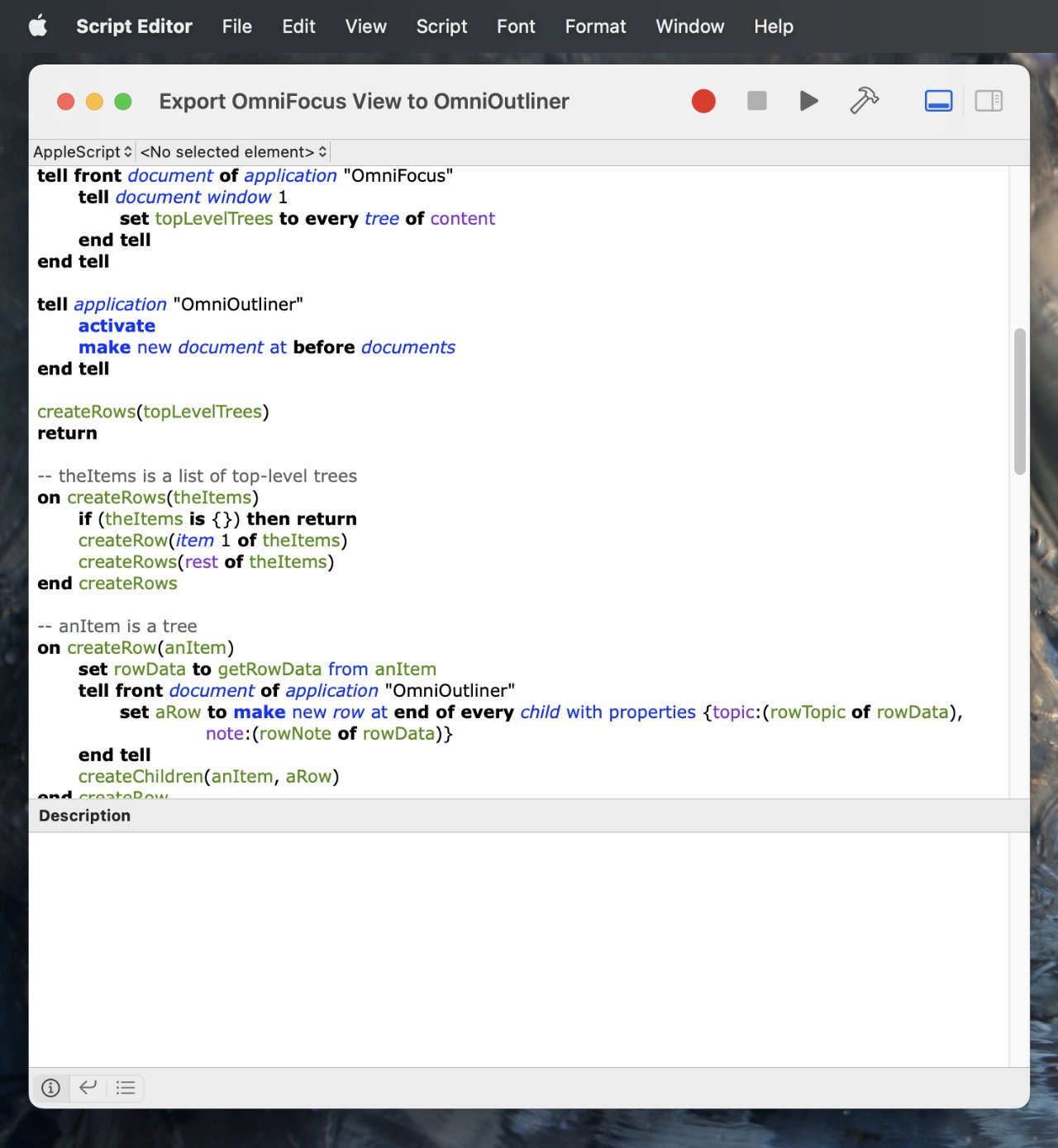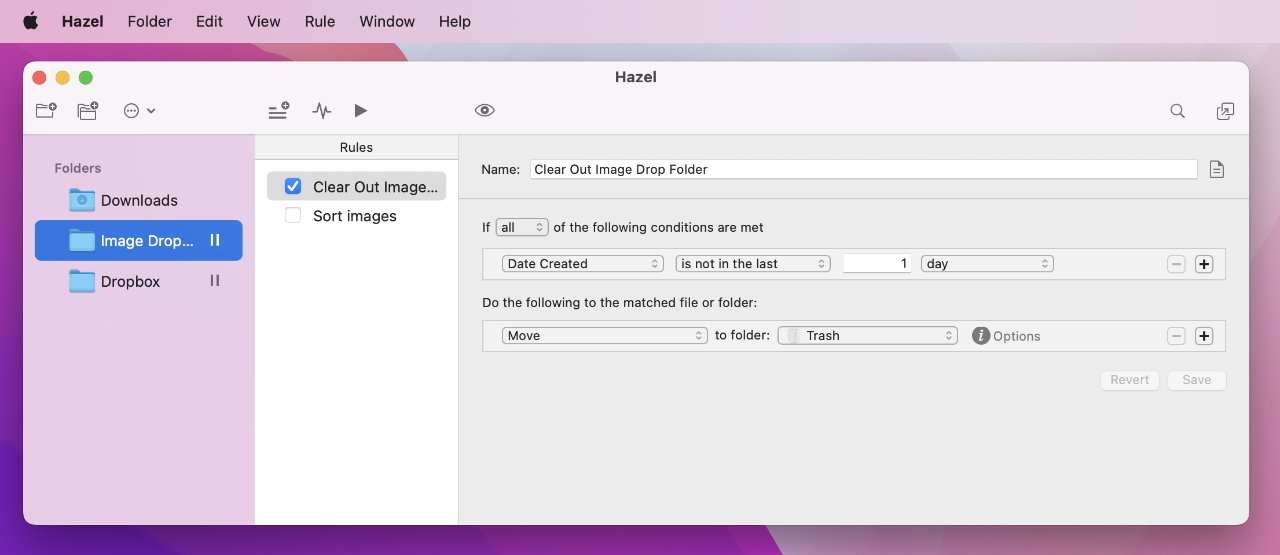Your Mac spends most of its time waiting for your typing. Use automation to make it work harder while you concentrate on your work instead of finding files and opening apps.
It's at least very likely that your work involves you opening the same documents time and time again. If it does, it's at least pretty certain that you open the same folders.
And without doubt, you use the same apps over and over.
It's not as if it's a chore clicking on your Dock, or as if it's exactly difficult to open a folder in the Finder. But your Mac can automatically have all of this ready for you, open and launched, just waiting for you.
Any time your Mac can do something for you, it means one less distraction from your work. And any time you ever have to do the same thing more than once, it's highly likely your Mac can do it instead.
Sometimes that means just using the most basic tools that come with every Mac. Sometimes it means learning Apple's dedicated automation apps, too.
And once you've got into this at all, once you've seen and felt the benefit of the Mac doing the tedious parts of your working day, then you're hooked. Then you'll be getting third-party apps to get more and more of this automation.
Straight out of the box
Start by just having the Mac au those apps you use every day be opened up for you. You do this by opening the Login Items section of the Mac, though the specific way you do it varies.
On macOS Monterey or earlier:
- Open System Preferences
- Click on Users & Groups
- Click the padlock to unlock this section and enter your Mac's password
- Make sure the Admin user at the top of the left list is selected
- Under the right hand list, click the plus button
- Choose an application you want opened atuomatically when you start your Mac
On macOS Ventura:
- Open System Settings
- Scroll down and select General
- Choose Login Items
- Choose an application you want opened atuomatically when you start your Mac
You can have as many or as few apps as you want. Notice that there will already be some entries in the list, though.
These tend to be what are called helper apps, utilities that particularly applications need to have launch when you start the Mac.
What with those helper apps and your own, you can build up quite a long list of apps that will now open automatically every time you start — or restart — your Mac. There's nothing wrong with that, but it can get irritating as you see app after app opening every day.
That's why you can choose to launch an app, but keep it hidden. So it's launched, it's open, it's ready, but it's not in your face.
Tick the box in the Hide column to do this.
Immediately there's a third-party option that's better
There's much more that Apple's own built-in tools can do to automate your work, but even for this basic opening of apps, there is an alternative. And it's very good.
Say that it's true you use the same apps over and over again, but it's more complicated than that. You have five that you open every time you're working for the Acme Company, but otherwise you don't need them at all.
And there's another set of five that you always use for every other client.
Rather than having your Mac open all ten, every time, have it open none of them.
Instead, get Bunch to open these apps — and only when you want it to, not every time the Mac starts up.
Bunch is typical of Mac automation tools in that it starts simple but once you're addicted to it, you never stop exploring.
For this job, though, you just download Bunch and start a new file in it. That file, also called a bunch, is a straight list of apps. You can just type out, say, Mail, Safari, Pages, and anything else you need, one line after another.
It is a simple list, and you can have as many simple lists as you want. So write one list for the Acme company with the five apps for them, and another for all your other clients with the apps for those.
Then when it's time to settle down to Acme Co work, you click a button or use a keyboard shortcut, and Bunch launches all five of the apps you need.
That doesn't sound as convenient or quick as having the apps open automatically first thing in the morning. But Bunch is fast, and on Apple Silicon, opening five apps feels close to instant.
Bunch is donateware, meaning it's free but you're asked to donate something to help the developer. Download and donate on the Bunch website.
Getting a little serious with it
Bunch may be a kind of minimalist automation app in how it is based on a straight list. But all automation tends to work in lists, in steps, like this.
Except possibly AppleScript. That's Apple's supremely powerful automation tool that's been part of the Mac since System 7 in 1991.
Countless people use AppleScript, but it is not straightforward. It's so far from straightforward that in 2005, Apple introduced Automator, a limited but easier to use automation tool you can still use today.
Don't, though. Automator is is not in enough of a sweet spot between ease of use and power to be worth digging into. At least not now, when it is on its way out.
And when its replacement, Shortcuts, is already here, is already working and is already better in every way.
Shortcuts came to the Mac from being on the iPhone and iPad, and it works exactly the same way as it does on those devices. If you've not used it on iOS, though, ultimately it is simply another list of steps.
It's just that those steps can be increasingly complicated.
So, yes, you can create a Shortcut that will open five apps for the Acme Co. But you could equally well have it create — that's create, not just open — a whole series of folders.
Maybe every time you work for a certain company, each time you start a new task for them, it ends up with you creating half a dozen folders. Let Shortcuts ask you what the name of the task is, and it can create all the folders at once — while also including the task in the name.
Or at the other end of a job, when you've finished and those folders are full of hundreds of documents. There will be ones you've got to keep, but there may also be so many that are truly done with and will never be needed again.
Rather than just leaving them there, perhaps taking up a great deal of storage space, you could go through removing them all by hand.
Or you could use Hazel.
Hazel is a Mac utility that stays in the background, watching the contents of folders. You could tell it, for instance, that in your Acme Co Images Folder, you want it to delete anything that's more than 1GB and is also over a month old.
If you do that, Hazel will just get on with it. Set it and forget it.
Hazel costs $42 direct from the developer, Noodlesoft.
Paid third-party automation apps
Speaking of folders and filenames, though, you can even automate naming them in such way that it helps you later.
For instance, you know that any time you create or save a file, the Mac records a Created Date and a Modified Date. But it is remarkably easy to find you've moved a file and somehow that date detail is gone.
So put it in the filename itself. Rather than leaving a Pages document as Untitled 44, rename it to "Draft 44" and append the full date.
You can do this by typing, but this is another case where the speed of typing the date is nothing, yet the action of checking the date is a huge distraction.
Rather than stopping to check whether today is really Friday or not, you can use TextExpander. On any Mac running TextExpander, you can type the letters "ddate" and when you tap the space bar, today's date is entered.
TextExpander is a subscription service that starts from $3.33 per month. You wouldn't pay that if its only use was adding a date to a file once in a while.
But TextExpander is always there on the Mac, you can time "ddate" into any app and it expands out to today's correct date. And TextExpander can go much further, writing out whole standard emails for you.
Special mentions
TextExpander is possibly the easiest of the third-party Mac automation tools to get used to. It can get complicated, and it rewards being studied, but it starts simple and comes with useful text expansions like that automatic date.
Keyboard Maestro, on the other hand, is pretty much infinitely powerful, but looks a bit bewildering at first. It's still the same thing of making a list or a series of steps for your Mac to work through.
But the sheer range of features in Keyboard Maestro is as startling as how an app so useful can only cost $36.
Keyboard Maestro, TextExpander, Hazel, and even Apple's Shortcuts and AppleScript have one thing in common, though. They are all general-purpose automation tools.
They vary in how wide and deep their features are, but each one is meant to help you practically regardless of what apps you use.
And there is one more class of automation that could be your first steps. The Omni Group has added what it calls Omni Automation to all of its apps.
Developed with ex-Apple automation expert Sal Soghoian, it's an extremely comprehensive series of tools. It effectively lets you customise the company's To Do and outlining apps, OmniFocus and OmniOutliner, plus its project management and drawing tools.
Just as with Keyboard Maestro, Hazel, and Shortcuts, the expanding Omni Automation comes complete with a whole community of users. In each case, the communities are a vibrant resource for learning this automation.
Get started
Hopefully more apps will add automation tools, but for overall purposes, Shortcuts is currently the best mix of ease and features. It's definitely the one to start with if you are just beginning to feel the benefits of automation.
Once you do begin, though, there is good and bad. The good is that you don't have to limit yourself to one automation tool, you can use any or all of them.
You can even use them in combination., having Hazel trigger a Shortcut that runs a Keyboard Maestro script that then performs an AppleScript.
The bad thing is that sooner or later, you will find yourself spending more time setting up an automation than it later saves you. But you'll be doing that, you'll be putting in that effort, because it is so enjoyable making all of this work for you.
 William Gallagher
William Gallagher
















 Christine McKee
Christine McKee
 Charles Martin
Charles Martin
 Mike Wuerthele
Mike Wuerthele
 Marko Zivkovic
Marko Zivkovic
 Malcolm Owen
Malcolm Owen





-m.jpg)





